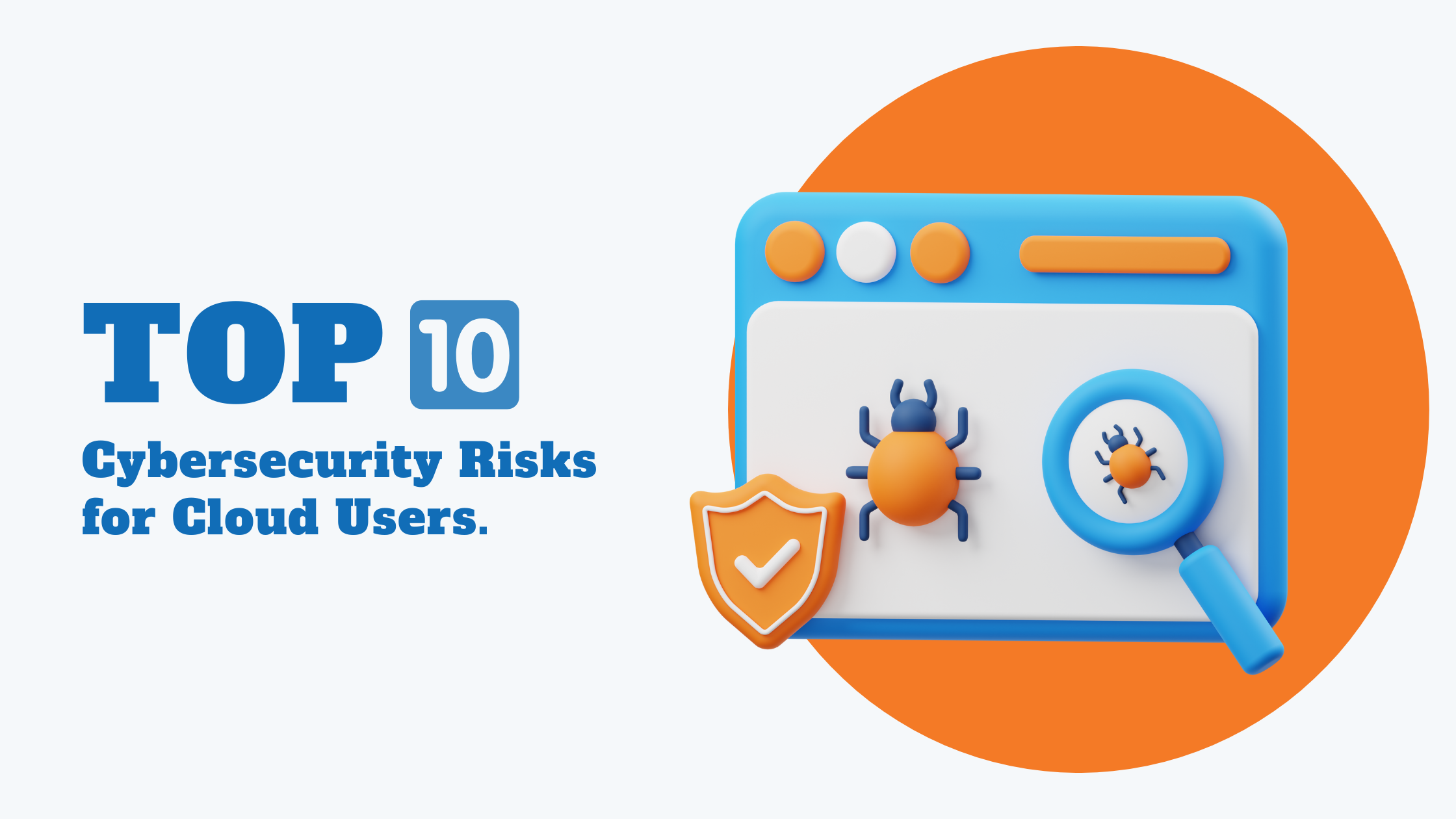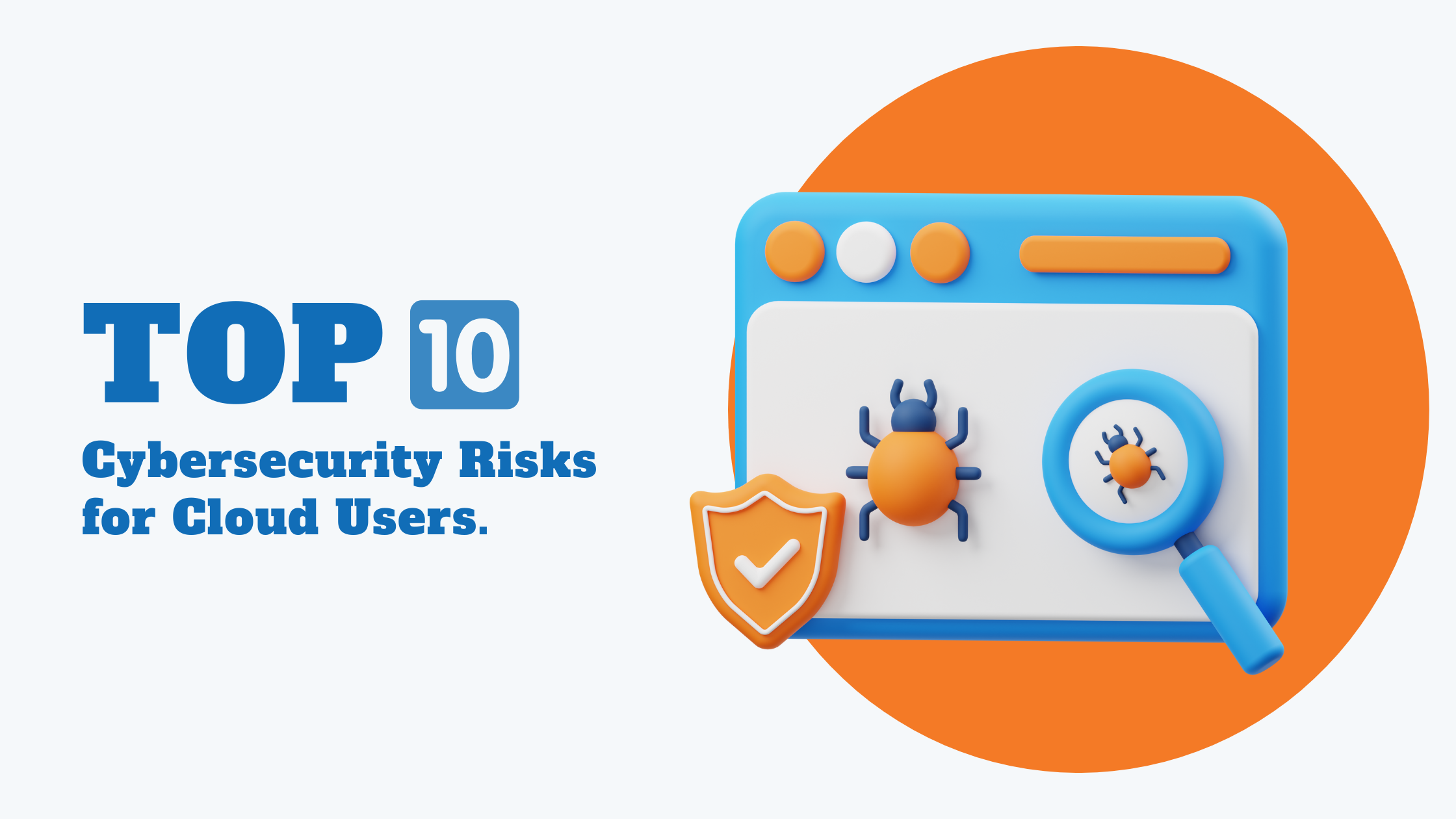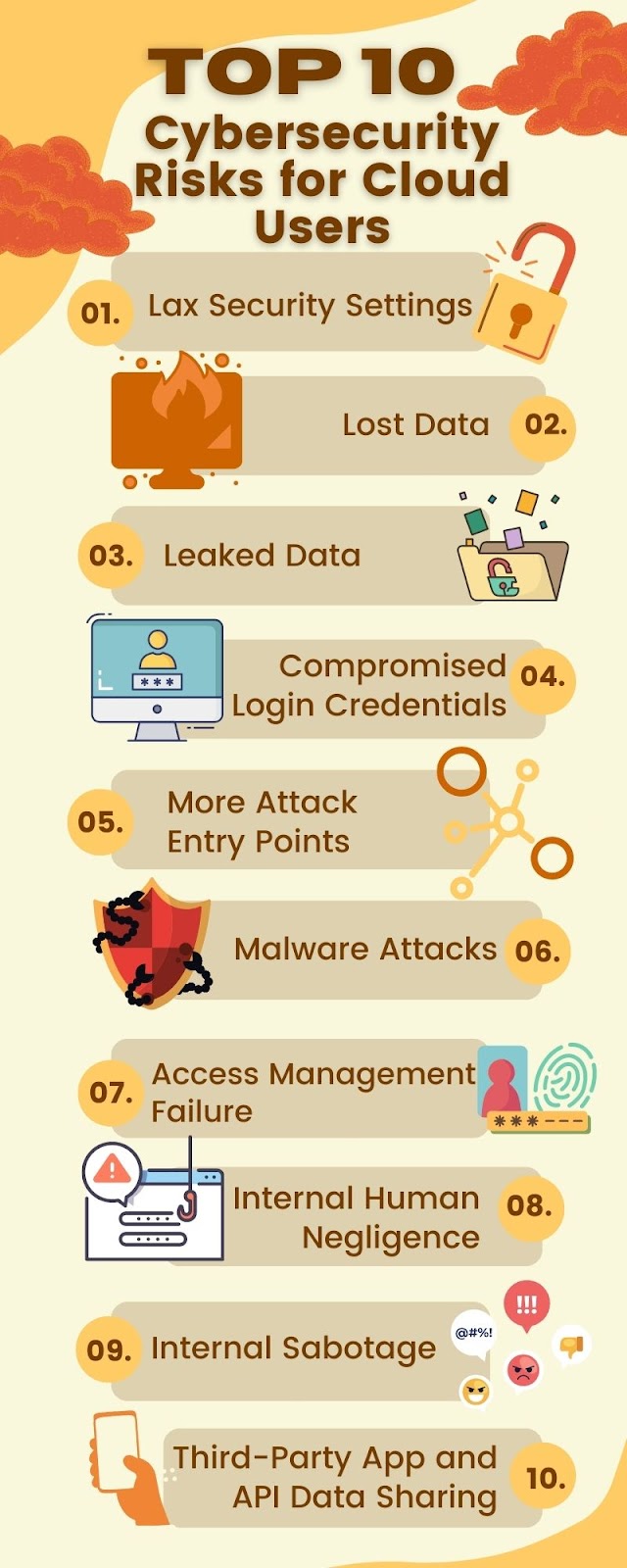While cloud services offer massive benefits for users, they don’t eliminate all cybersecurity risks.
The truth is that if you’re using cybersecurity services from even the top cloud providers like AWS, Google, and IBM, your data may still be vulnerable to cyber-attacks.
Shocking, I know.
Let’s look at the top 10 cybersecurity risks your company faces with its information in the clouds.
1. Lax Security Settings
Most cloud services offer a range of security settings to keep your data more secure.
However, if you don’t configure them properly, both your cloud data and business can be at risk from cyberattacks. A single ransomware attack costs an average of $1.85 million in 2022.
While it’s tempting to choose settings that make cloud data easier to access and use, those settings also leave your data vulnerable to outside access.
2. Lost Data
Many businesses make the mistake of relying solely on the cloud to store their data.
However, without a backup, you still run the risk of lost data. If you don’t have a backup strategy and a cyberattack compromises your data, you may lose everything forever.
3. Leaked Data
It’s important to have robust procedures and policies to prevent data leaks.
Once you’ve granted cloud data access internally or externally, you don’t have a lot of control over what happens to that data. Even if you revoke access later, there are still ways for people to retain the information.
It’s also easy to forget to change data access, leaving that data accessible to people who shouldn’t have it in the future.
4. Compromised Login Credentials
If cyber attackers gain access to login credentials for cloud data access, everything that login has access to in the cloud is at risk.
Cyber attackers can gain access to logins from phishing or malware, so it’s important for employees to know how to be more wary of possible attempts cyber attackers use to gain login credentials.
5. More Attack Entry Points
Cloud services connect a wide variety of IT systems, software, computers, and equipment within your organization.
However, they may also connect to external clients and service providers as well. Having a wider web of connectivity increases the number of entry points a cyber attacker can use to gain access to your data.
However, a good cybersecurity strategy can help mitigate the risks.
6. Malware Attacks
Malware isn’t only a risk for data on local servers and computers; it can also be a risk for data you retain in the cloud.
Once you have malware in your system, it can spread quickly. The best way to prevent malware from compromising your cloud data is to optimize your access controls, segment your network for malware containment, and implement threat-detecting solutions.
7. Access Management Failure
Access management limits the data users can access, what they can do, and what apps they can use.
However, access management can fail when…
- There are no policies governing how and when to grant access.
- Policies aren’t followed.
- Out-of-date configurations give individuals access to systems and data after access should be revoked.
8. Internal Human Negligence
Here are some of the things people within your company can do to put your cloud data at risk:
- Sharing passwords.
- Using non-secure passwords.
- Not locking screens.
- Losing company phones.
- Visiting malicious websites.
- Clicking malicious links.
- Falling for phishing attempts.
9. Internal Sabotage
There’s no guarantee that everyone in your company is honest.
Someone within your company could let in malware to steal data or sabotage your system in other ways if they have malicious intents. Avoiding internal sabotage involves strategies such as strong access management control settings, cloud service threat detection, and network segmentation.
10. Third-Party App and API Data Sharing
While third-party apps and APIs can make cloud collaboration and other work tasks easier, they can also open you up to employees sharing more data than they should.
That’s why it’s important to carefully research and limit which third-party apps and APIs have system access.
Conclusion
Using the cloud doesn’t have to be risky.
Preventative strategy is key. If you have good security and security settings, smart system setups, web safety training for employees, and strong policies in place, you can keep your business protected, even in the cloud.
The cybersecurity professionals at NSI are ready to provide a cybersecurity assessment or vulnerability analysis for you to ensure that your company is protected.
We’ve been around since 1985, so we’ve seen a little of everything. We’re here to help you succeed.
Contact us today to ask a question or book a meeting.


